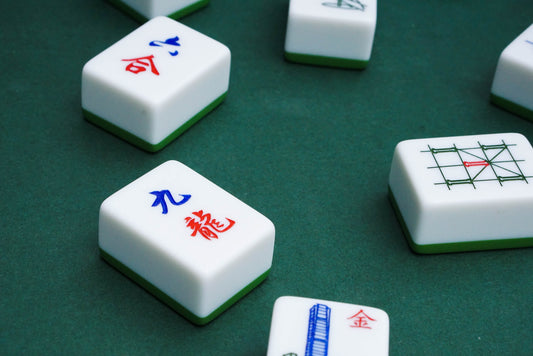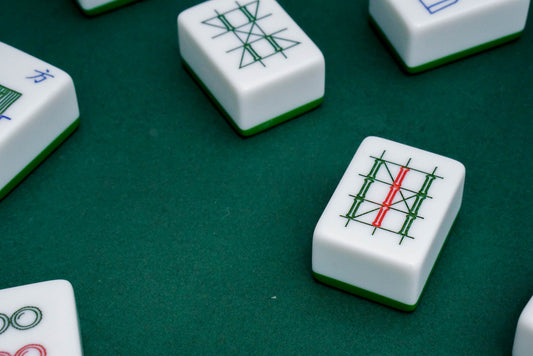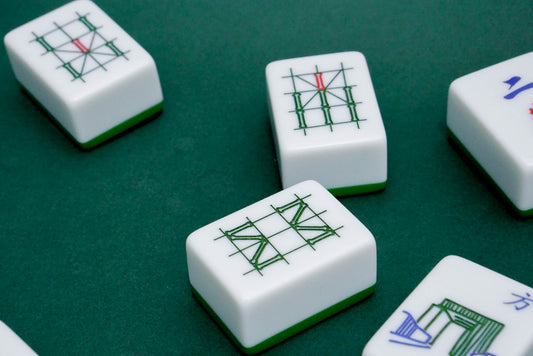Learn Mahjong Easily with 5 Fun Questions
There are many online resources teaching mahjong. Which one should you pick? We have reviewed and summarized them for you here.
We found that those videos that appear easy usually skip the more difficult parts and some important rules. They often avoid all Chinese characters even though they may be pretty crucial. Those videos that are comprehensive seem very complex and difficult to remember.
In this article, let me help you in a different way. I will turn these rules into 5 interesting questions. Answering these not only makes you know the logic behind the rules but also learn some fun facts which may help you to remember them.
There are regional variations in mahjong. But the rules we show here are really the core ones and apply to most of them.
Q1: How many tiles are there for a player to start with? 13 or 14?
By chance, these two numbers have special meanings in Chinese and Western culture.
13 in Chinese is 十三, which sounds like “sure alive” 實生. It is a good number but for Westerners, it is considered an unlucky number.
But to the opposite, 14 in Chinese is 十四, sounds like “Sure die” 實死, which is unlucky. That is why you see some buildings skip 14 in numbering the floors.
The right answer is 13. The player starts off with 13 tiles in hand and keeps drawing and discarding till he/she finds the last one to complete a winning hand of 14.
How to collect these 13 tiles at the beginning? No worry, other players will show you. After a few rounds, you will know.
Q2: To win a game, you need to collect sets of three, either as identical triplets called Pong or in a sequence of the same suits called Chow. So how come to win it needs a hand of 14 tiles, instead of a multiple of 3, like 15?
The answer is that one of the sets is not in a suite of three but comes as a pair of two identical tiles. They are called the eyes, very easy to remember, our eyes always come as a pair.
Q3. For the sets of three, both identical triplets and three-in-a-sequence are accepted, which one is easier to achieve?
Every tile comes in four copies. So, imagine in a triplet situation, you have two already in hand, and the chance to collect one out of the remaining two may not be very high. On the other hand, making a three-in-a-series, finding a number not already in your hand may be much easier.
That is why in the game, you are allowed to say Pong and collect a tile to make up a triplet if anyone discards that tile. But to make a set in sequence, you are only allowed to collect it from the player before you.
This means even if you want a tile a lot and see it being discarded by the player opposite you or the one after you, too bad, you cannot collect it. The only exception is that it is the last tile you need to win. Then anyone discarding it, you can collect it and claim your victory.
Q4. You are lucky enough to collect 4 of the same tile? Is it good?
Not necessarily, as you will never be able to make up the 4 sets plus a pair of eyes in this case with this fourth tile.
What you can do is to disclose it and get an extra chance to draw again. You can also keep it secretly for other use. Of course, you can also discard it without telling anyone so that no one knows what’s going on your side.
If you already got three in hand and see the last one coming out, you can also claim it like a Pong, and gain a chance to draw a new tile.
Q5 Do I really need to know the Chinese characters? Any easy ways out?
To the bare minimum, if your tiles do not come with an index, you may need to pick up the Chinese number. But it is not that difficult to remember if you follow our guides.
Once you know the basics and start to care about winning more or losing less, you better also pick up the wind by watching our video, Why 4. to understand how the winds work.
These are really the basic rules to learn. But once you know how to play, you will want to make better decisions every time you face the choice of discarding a tile after drawing a new one. Hope in future videos, we can share more with you on how to win big and lose less.



